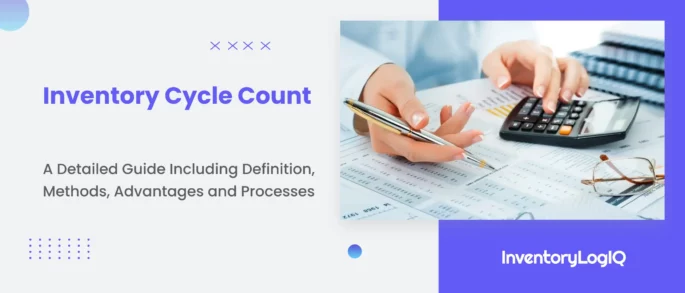Amazon Inventory Performance Index (IPI) Guide: Definition, Factors, 5 Simple Methods to Improve Your Amazon IPI Score in 2023
Selling products on Amazon is the dream for many retailers owing to the vast amount of experience and success the platform has had for the past couple of decades. While there are many benefits associated with listing your products on Amazon, such as getting access to their enormous consumer base, utilizing advanced technological features, and generating positive exposure for your business, you do have to abide by a rigid set of rules and guidelines if you want to succeed. One of these thresholds is the Amazon Inventory Performance Index (IPI) score.
It is a trackable metric that determines the health and optimization of every seller’s inventory and the processes they have in place to manage it. Retailers need to take care of maintaining their Amazon IPI score because they can be penalised if it falls below a certain limit by having their listings suspended, being barred from selling that item, and more. In this blog, we will take a detailed look at the definition, influencing factors, and accepted threshold of the Amazon IPI score and how to improve your Amazon Inventory Performance Index score in 2023.
- What is the Amazon Inventory Performance Index (IPI) Score?
- 3 Key Factors That Have an Impact on Your Amazon IPI Score
- How Can You View Your Amazon IPI Score in 2023?
- How to Improve Your Amazon Inventory Performance Index Score? 5 Simple Methods in 2023
- Conclusion: Choose InventoryLogIQ to Efficiently Manage Your Inventory on Amazon and Other Platforms in 2023
- How to Improve Your Amazon Inventory Performance Index Score: FAQs
What is the Amazon Inventory Performance Index (IPI) Score?
The Amazon IPI Score is a metric that is indicative of the performance and efficiency of your inventory management procedures. Your IPI score is marked on a scale between 1 to 1000 and the current minimum threshold is 450. Any IPI score that is above 450 is considered acceptable and the higher it is, the better your inventory management practices are.
It is important to constantly monitor your Amazon IPI score to make sure that it is within the confines that Amazon has laid out. If it happens to dip below 450 for any reason, Amazon will place various restrictions on your account, including suspending your listings, actively lowering the visibility of your products, preventing users from purchasing items from you, and more, until it climbs back up above the minimum figure of 450.
The Amazon IPI score is calculated every 3 months and 6 weeks prior to the end of every quarter, so you will be notified of your score and have some leeway to improve it before you get penalized. If your IPI score is above the required limit for 2 score checks in a row, your business will be eligible for various benefits, such as qualifying for unlimited storage space for every product category.
3 Key Factors That Have an Impact on Your Amazon IPI Score

Amount of Excess Inventory
Amazon seeks to make a prominent distinction between using its fulfillment centers to store your products until they get sold, which is acceptable, and using them as long-term storage to let excess inventory accumulate, which is not. Amazon labels products as “excess inventory” if it surpasses the predetermined 90 days of being in storage based on demand forecasts done by your business.
A good rule of thumb to follow is maintaining 30 to 60 days’ worth of inventory to avoid being penalised on the off chance that the items do not get sold in time. Additionally, Amazon also provides various insights into the current demand levels of certain products and recommends the quantity of inventory you need to sustain it. If you already have excess inventory piling up, the company also provides suggestions to dispose of it.
FBA Sell-Through Rate of Your Business
Your Amazon sell-through rate indicates how many items are sold to customers in relation to the amount of inventory that you have in storage of that same item. It is calculated by dividing the number of units sold by the number of units you have on hand during a specified time frame. If you have a lower-than-intended sell-through rate, Amazon provides suggestions on how it can be improved to ensure that your products are moved faster and do not take up unnecessary storage space.
There is a section called “Improve Sell-Through” that highlights the products that have a low sell-through rate, the specified sell-through rate, the sales rank, the sales data over the previous 90-day period, the available inventory, the age of the current inventory, the estimated storage fees and more.
Current Levels of Stranded Inventory
Stranded inventory refers to items that you continue to have in storage but cannot be sold due to errors pertaining to the listing, SKU number, returns, or multiple other reasons. In this scenario, inventory labelled as “stranded” cannot be sold to customers, leave the warehouse or continue to have an interactive listing, which results in lost sales and profits. Fortunately, there is a quick fix.
There is a “Fix Listings” option in your seller dashboard, so you can just click on it and follow the instructions. To get a more detailed description, you can read our blog on stranded inventory. Just like with excess inventory, Amazon mentions which products and how many units are stranded, whether they have an auto-disposal date, the reason they got labelled as “stranded” and how they can be relisted.
How Can You View Your Amazon IPI Score in 2023?
The first thing to do is log into your Seller Central, then choose “Inventory” and then select “Inventory Planning” from the drop-down menu to access your Inventory Dashboard, from where you can check your current Amazon IPI score.
After that, select the “Performance” tab to get your Amazon IPI score.
There are many ways that Amazon makes it easier for your business to raise its IPI score through your Inventory Performance Dashboard. They have been listed below:
- Recommendations to Dispose of Excess Inventory: Amazon provides various suggestions to reduce excess inventory that can lower holding, storage, and carrying costs. Additionally, it also provides information regarding the items that are classified as excess inventory, the reason for it, the forecasted cost to store it and ways you can reduce it.
- Suggestions for Stock Replenishment: Amazon will help you identify which products require instant restocking by analysing every SKUs current inventory levels in relation to the demand level it has.
- Insights to Relist Stranded Inventory: Amazon provides actionable knowledge about stranded inventory to help guarantee that product listings will continue being available. It also provides the list of products and the number of units that are classified as stranded inventory, why they were labelled as such and the steps to follow to relist them.
How to Improve Your Amazon Inventory Performance Index Score? 5 Simple Methods in 2023
Increase Your Sell-Through Rate
A good 90-day continuous sell-through rate which puts you in the “green” zone on the IPI graph is what Amazon wants from all its merchants. Visit the “Inventory Age” page in your inventory dashboard to see the sell-through rate for all of your currently active items. The products with the least sell-through can be identified and you can also see the available suggestions for raising it.
By running a promotion to boost conversions, marketing your goods, honing your keyword targeting technique and employing more engaging and higher resolution listing photos, you can raise your sell-through rate to surpass Amazon’s base expectations and eventually increase your Amazon IPI score.
Lower the Amount of Excess Inventory You Have
This one should go without saying – Amazon doesn’t encourage its sellers to endlessly hold unsold goods. For advice on how to handle surplus inventory, go to the “Manage Excess Inventory” section in your inventory dashboard. Amazon might also advise you to put up an “Amazon Outlet” offer in order to sell out-of-season goods and overstock merchandise rapidly.
Using these pointers and implementing them to get rid of any excess inventory lying around will not only reduce storage costs and free up excess space but will also have a positive impact on your Amazon IPI score.
Refrain From Exposure to Long-Term Storage Expenses
Take care to ensure you get rid of any goods before FBA’s 365-day limit is reached. You will be charged high long-term storage fees if your inventory is more than 365 days old. You can order your merchandise inventory to be removed or even have Amazon dispose of it for you.
Paying expensive storage fees doesn’t just reduce your bottom line; it also lowers your Amazon IPI score, so making sure that you are only paying for the inventory you intend to sell plays a big part in streamlining your inventory management procedures and eventually increasing your IPI score.
Address Listing Errors Immediately
Listing errors can prevent customers from being able to successfully and seamlessly purchase your goods, which can have negative implications on your profit margins as well as your Amazon IPI score. Listing errors can also be brought about by penalties imposed by Amazon regarding excess and stranded inventory.
If you do get these errors, follow the instructions provided by Amazon to resolve them as soon as possible and if they continue to persist, get in touch with customer support to help rectify it. Make sure to solve existing issues before deleting existing listings or adding new ones.
Conduct Demand Forecasting
Demand forecasting helps with identifying the current demand levels for certain products based on a variety of metrics. You should also take into consideration the possibility of various unforeseen circumstances occurring so you can plan your inventory levels accordingly.
It is generally advised to stock enough inventory for the next 30 to 60-day period and always have your flagship items on hand. Keeping the right levels of inventory will prevent items from being labelled as excess or stranded and can help maintain and further increase your Amazon IPI score.
Suggested Read: What is Inventory Forecasting?
Conclusion: Choose InventoryLogIQ to Efficiently Manage Your Inventory on Amazon and Other Platforms in 2023
The Amazon IPI score is a good way for retailers to understand where their business stands in relation to inventory management. A high IPI score indicates that a seller is effectively managing their inventory and is likely to generate a positive customer experience, while a low score may indicate potential problems such as out-of-stock items or excess inventory that is not selling. Overall, the Amazon Inventory Performance Index is an important metric for you to monitor as it can impact their reputation and sales on the Amazon marketplace.
By maintaining a high IPI score, you can also receive many benefits from Amazon, such as unlimited storage across product categories. However, if you have a lower Amazon IPI score, you could be subject to various penalties, such as suspended product listings, lack of exposure for your business and more. Therefore, it is imperative to constantly keep track of it and improve upon it. If you need help with enhancing your inventory management procedures so you can have a high Amazon IPI score, InventoryLogIQ can be the solution you need.

InventoryLogIQ provides multiple inventory management tools to help sellers improve the way they order, store and fulfill their inventory. Our platform can integrate with online selling channels like Amazon and Flipkart, and provide detailed metrics into the existing performance of your inventory management procedures. We also utilize AI and ML to automate important aspects, such as setting replenishment triggers, restocking items, and much more. Because of all these tools, we ensure that your business benefits in the following ways:
- We help lower your inventory storage costs by 40%
- We assist in increasing the availability of all your SKUs by up to 99%
- We enable ultra-fast delivery and fulfillment for more than 70% of the demand










